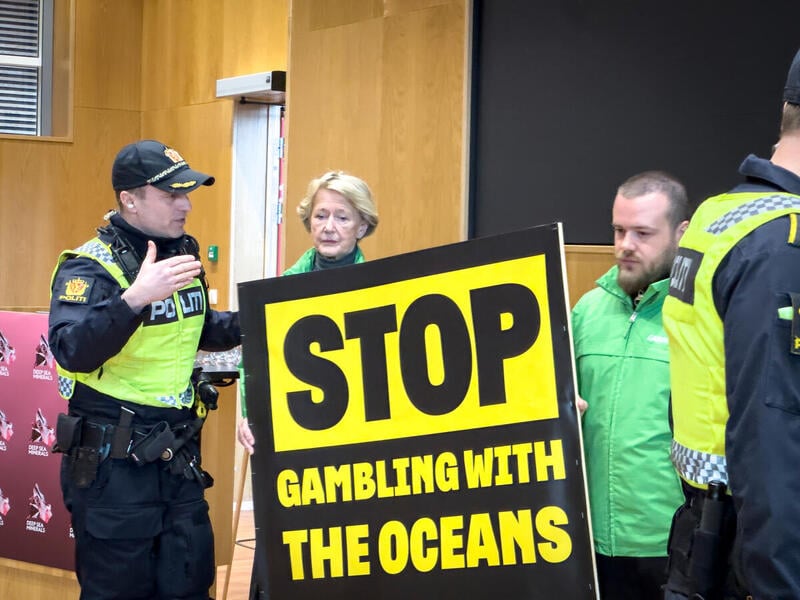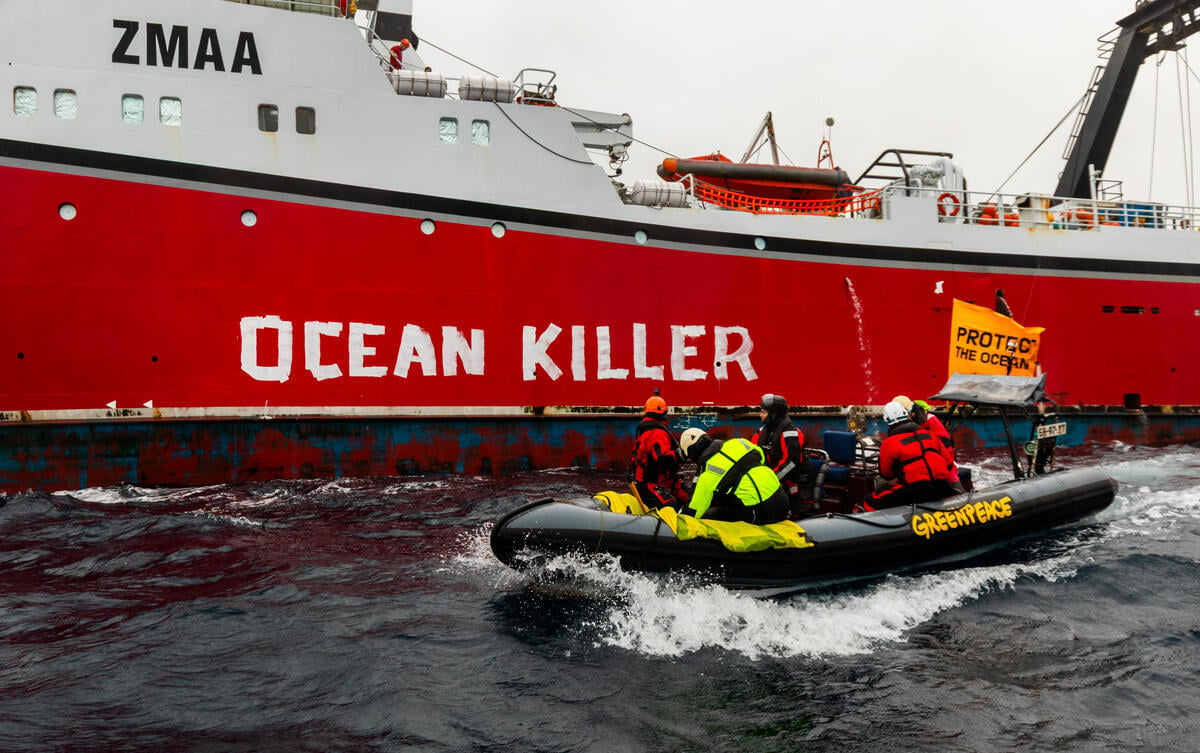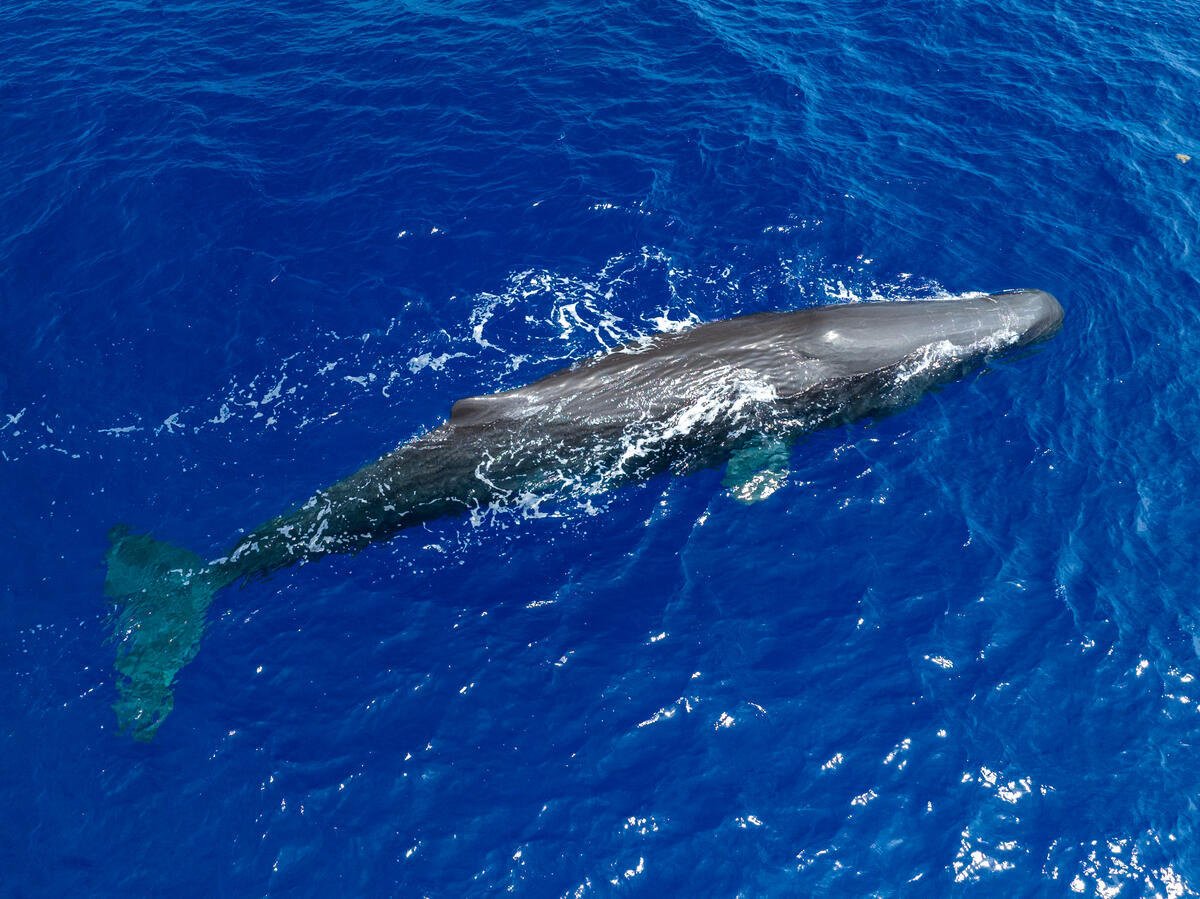Puerto Ayora, Ecuador – The Greenpeace ship Arctic Sunrise has embarked on a six-week expedition around the Galápagos Islands to showcase the amazing benefits of strong marine protection for one of the world’s most celebrated natural treasures and its iconic local species, and to support the urgent ratification of last year’s historic UN Ocean Treaty.
Live interviews from the Galápagos are available on request.
Along with scientists from the Jocotoco Conservation Foundation, the Charles Darwin Foundation, the Galapagos Science Center and MigraMar, and park rangers from the Galápagos National Park, Greenpeace’s expedition will emphasise the power of marine protection, documenting the success of the Galápagos Marine Reserve and the incredible wildlife and habitats of the sea near the Galápagos. Data collected during the expedition will strengthen the case for a new high seas protected area.
- Using BRUVS (Baited Remote Underwater Video Stations), Greenpeace and partners will study seamounts inside and outside the existing Galápagos Marine Reserve.
- ROVs (Remotely Operated Vehicles) will also be deployed to collect footage of shallow seamounts in and outside the marine reserve.
- Environmental DNA (E-DNA) sampling will be done to test the presence and variety of species in ecosystems in the region.
- Documenting migratory routes of sharks in the Galápagos Marine Reserve and beyond into the high seas.
Ruth Ramos, Greenpeace Protect the Oceans campaign, on board the Arctic Sunrise said: “The Galápagos Marine Reserve is one of the best examples of ocean protection in action. But it is still an exception in a world where only 3% of the ocean is currently fully or highly protected. To the east of the Galápagos Marine Reserve is the Eastern Tropical Pacific Marine Corridor, a vast area of ocean under no country’s jurisdiction and part of an underwater superhighway for special species like sharks and sea turtles. But this place has no protection and is still subjected to intense human pressures. The Global Ocean Treaty gives us a chance to change this, but first it must be passed into law by at least 60 countries”.
Eliecer Cruz, representative of the Jocotoco Foundation, said: “In a significant step towards marine conservation, Ecuador expanded this protection in 2022 by including an additional 60,000 square kilometers within the Galápagos Exclusive Economic Zone (EEZ), establishing the Hermandad Marine Reserve. The main goal of this initiative is to safeguard various migratory species while establishing a crucial connection with the Bicentennial Marine Management Area of Costa Rica”.
Arturo Izurieta, Director of the Galapagos National Park, highlighted this initiative and mentioned: “It is highly gratifying that the protection of the Galapagos Islands is a reference to promote global initiatives that will lead us to achieve the 30×30 objective, that is, to protect at least 30% of the oceans by 2030”.
Since the last time a Greenpeace ship was in the region, the UN agreed on a Global Ocean Treaty (also known as the Biodiversity Beyond National Jurisdiction – BBNJ – Treaty). A powerful tool that can help protect at least 30% of the oceans by 2030, but needs to be ratified quickly to enter into force.[1][2]
“Marine ecosystems are fundamentally interconnected, and what happens to these areas outside the reserve impacts what happens inside”, adds Ramos. “Protected healthy oceans are beneficial for biodiversity, and also local communities and the fight against global warming”.
Two recent reports underline the urgent need to protect the oceans.
- The first State of the World’s Migratory Species assessment recognises the need for rapid ratification of the UN Ocean Treaty and networks of well connected, effectively managed protected areas as key solutions to extinction risk. The report warns that across land and sea, one in five migratory species is threatened with extinction and 97% of the 58 fish species listed under the Convention on Migratory Species (CMS) are facing a high risk of extinction, including migratory sharks, rays and sturgeons.[3]
- A study published in January revealed that 75% of the world’s industrial fishing vessels are hidden from public view, highlighting the massive presence of ships around the Galápagos Marine Reserve.[4]
In late March, the Arctic Sunrise will continue its journey to Colombia to promote the conservation of the Colombian tropical Pacific and protection against plastic pollution.
ENDS
Contacts:
Virginia Rabal, Communication Officer, Greenpeace Spain, onboard: [email protected], WhatsApp only +34 619 92 21 08 (GMT – 8)
Magali Rubino, Global Media Lead for Greenpeace’s Protect the Oceans campaign, Greenpeace France: [email protected], +33 7 78 41 78 78 (GMT+1)
Greenpeace International Press Desk: [email protected], +31 (0) 20 718 2470 (available 24 hours)
Notes:
First pictures and footage of the Arctic Sunrise in the Galapagos are available from the Greenpeace Media Library.
Ruth Ramos is a campaigner for Greenpeace international, working in Greenpeace’s Protect the Oceans campaign.
The Fundación de Conservación Jocotoco is an Ecuadorian non-governmental organization protecting areas of critical importance for the conservation of threatened species in Ecuador: www.jocotoco.org.ec
The Charles Darwin Foundation for the Galapagos Islands (CDF) is an international nonprofit that has been present in Galapagos since 1959, operating under a special agreement with the Government of Ecuador. Its mission, and that of its Research Station, is to tackle the greatest threats and challenges to Galapagos through scientific research and conservation action, in order to safeguard one of the world’s most important natural treasures: www.darwinfoundation.org
The Galapagos Science Center (GSC) has been created by the University of North Carolina at Chapel Hill and the Universidad San Francisco de Quito in Ecuador to advance science and conservation in the Galapagos Islands and to extend a richer, more complete understanding of island ecosystems and the threats to their sustainability to the world: www.galapagosscience.org
MigraMar is the leading scientific authority in migratory species research in the Eastern Pacific Ocean (EPO): www.migramar.org
The Arctic Sunrise has been part of the Greenpeace fleet since 1995 when it took its first trip to the North Sea to document marine pollution by oil from offshore installations. Since then, the Arctic Sunrise has been all over the planet, including the Congo, the Amazon and most recently to a three-month expedition to the Antarctic to conduct scientific research on biodiversity in the region.
According to the Marine Protection Atlas guide, only 3% of the ocean is currently fully or highly protected: www.mpatlas.org
[1] The 30×30 target – enshrined in the Kunming-Montreal Global Biodiversity Framework (GBF) – was agreed by all governments under the Convention on Biological Diversity (CBD) in December 2022.
[2] The historic Global Ocean Treaty was agreed in March, adopted in June and opened for signature at the UN in September 2023. It will only enter into force once it is ratified by at least 60 countries.
Greenpeace created an interactive map where ratification of the treaty can be monitored, along with threats on the oceans.
In September 2023, Greenpeace International published 30×30: From Global Ocean Treaty to Protection at Sea setting out the political process to deliver protection for the global oceans. The report explores how cumulative pressures on the high seas are increasing, and quantifies for the first time the growing fishing activity in areas earmarked for protection, using data from Global Fishing Watch. A petition has been launched by Greenpeace to call on governments to rapidly ratify the UN Ocean Treaty to create new ocean sanctuaries.
[3] State of the World’s Migratory Species | CMS
[4] Published in the journal Nature and led by Global Fishing Watch



